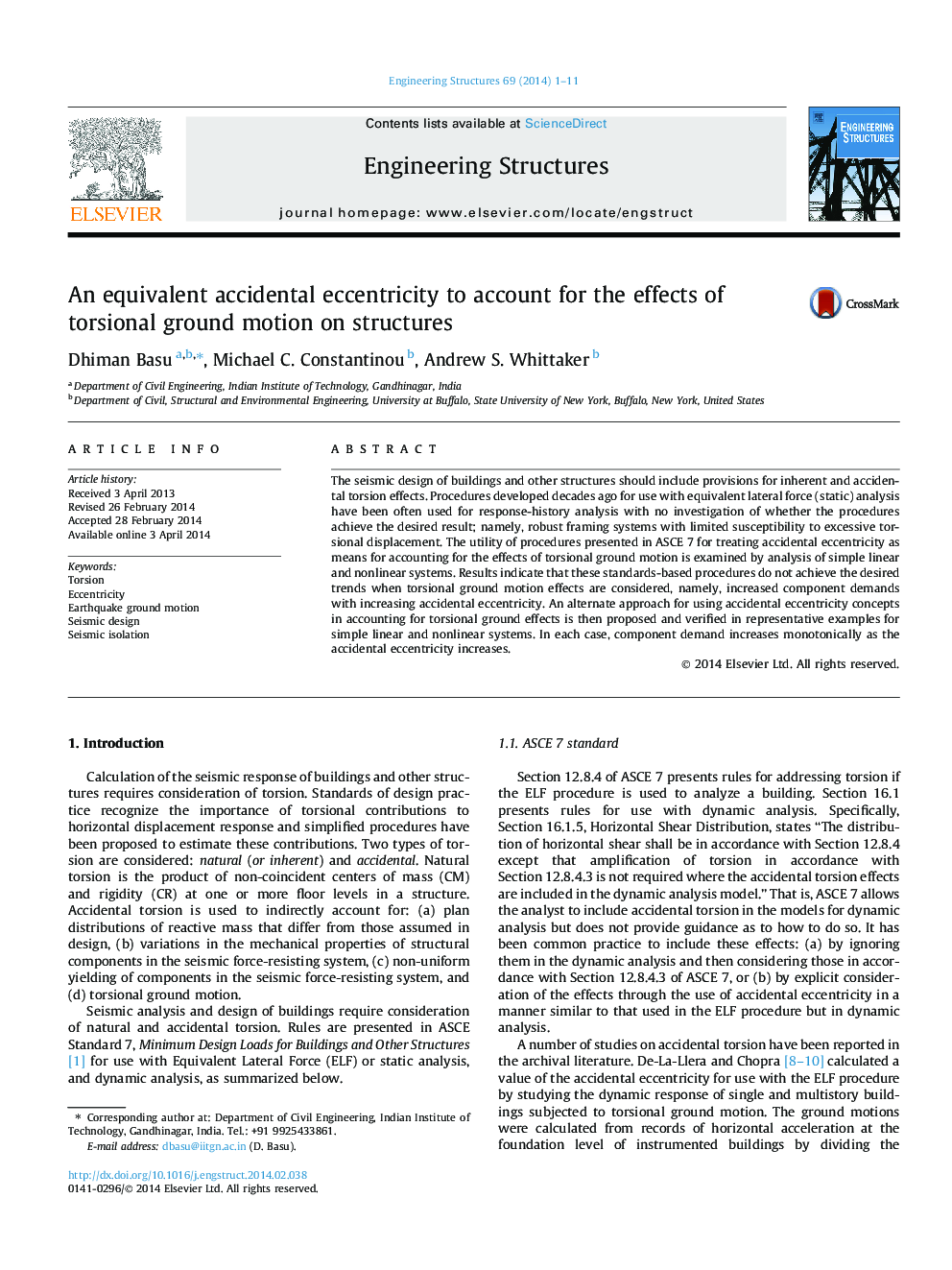| Article ID | Journal | Published Year | Pages | File Type |
|---|---|---|---|---|
| 266740 | Engineering Structures | 2014 | 11 Pages |
•Accidental eccentricity due to torsional ground motion.•Alternate definition of accidental eccentricity.•Step-by-step procedure to quantify accidental eccentricity.•Effect of yield displacement on accidental eccentricity in isolation system.
The seismic design of buildings and other structures should include provisions for inherent and accidental torsion effects. Procedures developed decades ago for use with equivalent lateral force (static) analysis have been often used for response-history analysis with no investigation of whether the procedures achieve the desired result; namely, robust framing systems with limited susceptibility to excessive torsional displacement. The utility of procedures presented in ASCE 7 for treating accidental eccentricity as means for accounting for the effects of torsional ground motion is examined by analysis of simple linear and nonlinear systems. Results indicate that these standards-based procedures do not achieve the desired trends when torsional ground motion effects are considered, namely, increased component demands with increasing accidental eccentricity. An alternate approach for using accidental eccentricity concepts in accounting for torsional ground effects is then proposed and verified in representative examples for simple linear and nonlinear systems. In each case, component demand increases monotonically as the accidental eccentricity increases.
